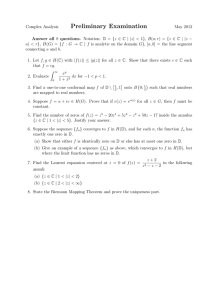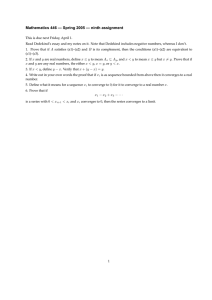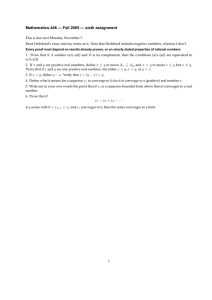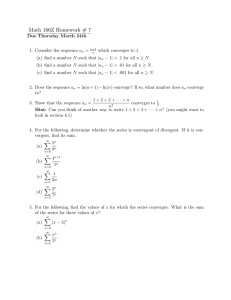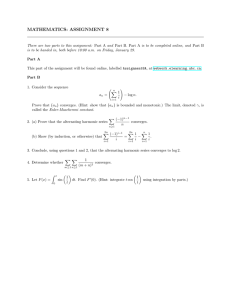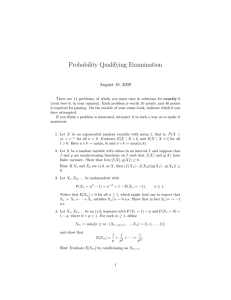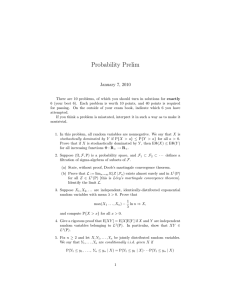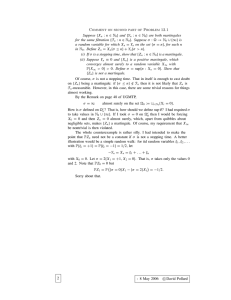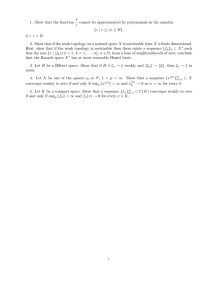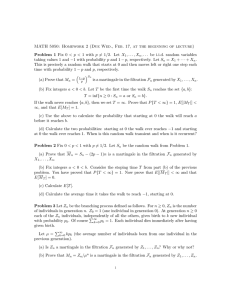Probability Prelim August 19, 2008
advertisement
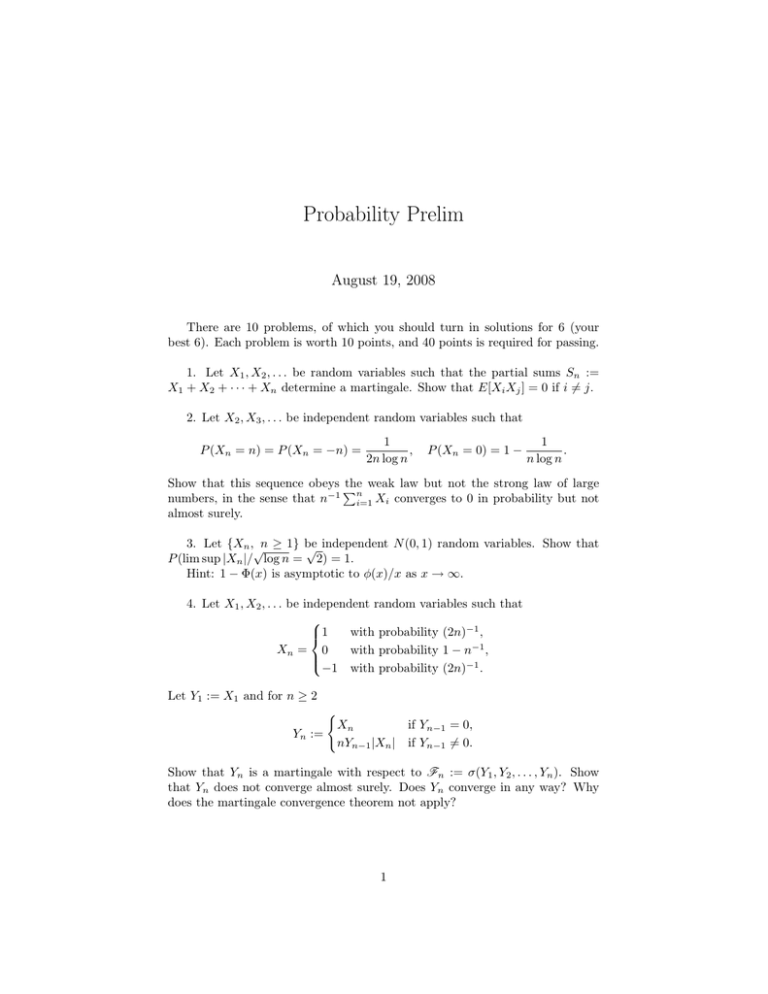
Probability Prelim
August 19, 2008
There are 10 problems, of which you should turn in solutions for 6 (your
best 6). Each problem is worth 10 points, and 40 points is required for passing.
1. Let X1 , X2 , . . . be random variables such that the partial sums Sn :=
X1 + X2 + · · · + Xn determine a martingale. Show that E[Xi Xj ] = 0 if i != j.
2. Let X2 , X3 , . . . be independent random variables such that
P (Xn = n) = P (Xn = −n) =
1
,
2n log n
P (Xn = 0) = 1 −
1
.
n log n
Show that this sequence obeys !
the weak law but not the strong law of large
n
numbers, in the sense that n−1 i=1 Xi converges to 0 in probability but not
almost surely.
3. Let {Xn ,√n ≥ 1} be
√ independent N (0, 1) random variables. Show that
P (lim sup |Xn |/ log n = 2) = 1.
Hint: 1 − Φ(x) is asymptotic to φ(x)/x as x → ∞.
4. Let X1 , X2 , . . . be independent random variables such that
with probability (2n)−1 ,
1
Xn = 0
with probability 1 − n−1 ,
−1 with probability (2n)−1 .
Let Y1 := X1 and for n ≥ 2
&
Xn
if Yn−1 = 0,
Yn :=
nYn−1 |Xn | if Yn−1 != 0.
Show that Yn is a martingale with respect to Fn := σ(Y1 , Y2 , . . . , Yn ). Show
that Yn does not converge almost surely. Does Yn converge in any way? Why
does the martingale convergence theorem not apply?
1
5. Let X and Y be independent exponential random variables with parameters λ and µ. (For example, P (X > x) = e−λx for x > 0.)
(a) Show that Z := min(X, Y ) is independent of the event {X < Y }.
(b) Find P (X = Z).
(c) Find the distribution of U := (X − Y )+ = max(X − Y, 0).
(d) Find the distribution of V := max(X, Y ) − min(X, Y ).
6. A die is thrown 10 times. What is the probability that the sum of the
scores in 27?
Hint: Use probability generating functions.
7. Suppose W := (X, Y ) is a two-dimensional random variable and QW T is
N (0, 1) for all 2 × 2 rotation matrices
'
(
cos θ
sin θ
Q :=
.
− sin θ cos θ
Prove that X and Y are independent and N (0, 1).
8. Let X1 , X2 , . . . and Y1 , Y2 , . . . denote random variables on a common
probability space. Suppose Xn converges to 0 in probability as n → ∞, and Yn
converges to Y weakly. Prove that (Xn , Yn ) converges weakly to (0, Y ).
9. Construct two random variables X and Y such that:
(a) X is N (0, 1),
(b) Y is N (0, 1), and
(c) (X, Y ) is not a Gaussian random vector.
10. Suppose X and Y are independent bounded random variables. Prove in
complete detail the following assertions:
(a) E(XY ) = E(X)E(Y ),
(b) E(X | Y ) = E(X).
2
